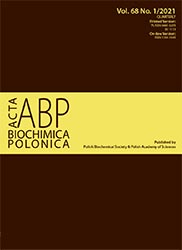Black rice cultivar from Java Island of Indonesia revealed genomic, proteomic, and anthocyanin nutritional value
Abstract
Black rice is considered to be functional food containing anthocyanins as bioactive compounds. This study examined the genomic and proteomic patterns in local black rice from Java Island, Indonesia, with attention to the mechanism of anthocyanin synthesis. Three kinds of black rice from Java Island, including black rice from East Java (BREJ), black rice from Central Java (BRCJ), and black rice from West Java (BRWJ), were studied in comparison to white rice (WREJ) and red rice (RREJ). Genomic profiling was done by simple sequence repeat (SSR) analysis, and sequencing of red coleoptile (Rc) and glycosyltransferase (GT) genes, followed by in silico analysis. Total anthocyanin was investigated by ultra-high performance liquid chromatography- diode array detector (UHPLC-DAD). The proteomic profiles were determined by liquid-chromatography and mass spectrometry of tryptic peptides. The SSR profiles showed a specific band in each black rice variant. The Rc gene exon-2 sequences were similar in the three black rice cultivars. The GT gene sequence was identified as a new variant that correlates with the purple stem, leaf, bran, and whole grain morphology seen exclusively in the BRWJ cultivar. The anthocyanin composition in Java black rice is diverse. The highest cyanidin level was seen in BRWJ and the highest level of peonidin-3-O-glucoside in BREJ. Proteomic profiling of the black rice cultivars demonstrated that the expression of proteins that might be related to the levels of anthocyanin synthesis varied. These studies conclude that the genomic, proteomic and anthocyanins composition of Java black rice cultivars may be used the improvement of their functional nutrition values.
Acta Biochimica Polonica is an OpenAccess quarterly and publishes four issues a year. All contents are distributed under the Creative Commons Attribution-ShareAlike 4.0 International (CC BY 4.0) license. Everybody may use the content following terms: Attribution — You must give appropriate credit, provide a link to the license, and indicate if changes were made. You may do so in any reasonable manner, but not in any way that suggests the licensor endorses you or your use.
Copyright for all published papers © stays with the authors.
Copyright for the journal: © Polish Biochemical Society.


